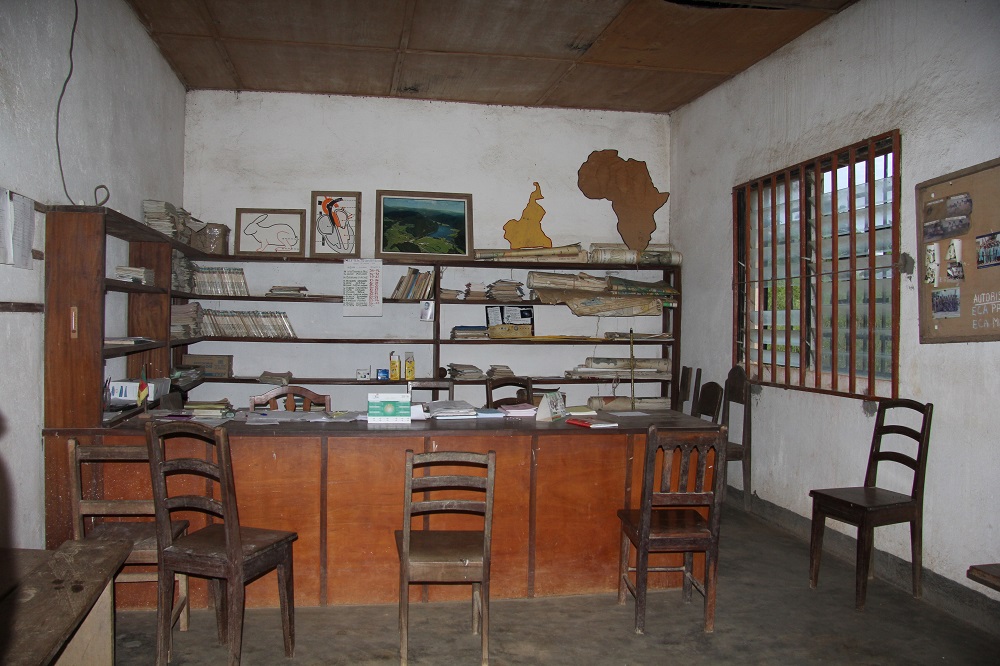As in many other fields, technology is redefining the dynamics of learning. However, the digital divide continues to be a critical obstacle to achieving educational equity. Despite efforts in connectivity and infrastructure, millions of students and teachers in vulnerable contexts still lack full access to digital tools, falling behind in an increasingly interconnected global environment. The COVID-19 pandemic starkly exposed these inequalities, highlighting the urgency of preparing teachers to integrate technology meaningfully into their classrooms.
Aware of this challenge, Teach For All and the ProFuturo Foundation joined forces to implement the “Digital Skills and Community Leadership for Teachers and Students” project from 2023 to 2024. This initiative, carried out in five countries across three continents, focused on training over 8,500 teachers through a cascade training approach, combining digital skills, collective leadership, and the integration of innovative methodologies. Its ultimate goal was to empower teachers as change agents capable of transforming their educational communities and promoting equitable access to digital education.
Below, we analyze the goals achieved, the challenges overcome, and the lessons learned from this ambitious experience, emphasizing the role of international collaboration and the value of contextualized solutions in building a fairer and more inclusive educational future.
The Digital Divide in 21st-Century Education
Technology offers unprecedented opportunities to improve the quality of education, personalize learning, and prepare new generations for a constantly evolving world. However, the digital divide remains significant. According to UNESCO, disparities in access to and use of technology not only marginalize under-resourced students but also limit the potential of teachers who lack strong digital skills. This inequality threatens to perpetuate educational injustices and hampers the comprehensive development of children and youth.
In this context, simply providing devices and connectivity is not enough. It is also essential to train teachers to harness the potential of digital tools in the classroom, fostering 21st-century skills such as critical thinking, creativity, and collaboration. The “Digital Skills and Community Leadership for Teachers and Students” project was conceived with this comprehensive approach, combining the ProFuturo Foundation’s expertise in digital education with Teach For All’s “Teaching As Collective Leadership” (TACL) framework, aiming for systemic and sustainable change.
The project “Digital skills and community leadership for teachers and students” achieved a significant impact, exceeding the proposed goals and generating tangible transformations in the participating educational communities.
Methodology and Implementation

Image: Teach for Cambodia
The “Digital Skills and Community Leadership for Teachers and Students” project was structured around a cascade training methodology designed to maximize impact by training an initial group of coaches, who would then train other teachers in their communities. This approach not only amplified the project’s outcomes but also fostered collective leadership, empowering participants to act as change agents in their educational environments.
The project was implemented in five countries: Cambodia, Chile, Colombia, Kenya, and Zimbabwe. The courses, tailored to local contexts, included content on basic digital skills, the use of interactive tools, and project-based learning with innovative methodologies. Each 25-hour course was complemented by activities that encouraged deep pedagogical reflections and practical classroom application.
The project utilized a mix of formats to adapt to each country’s realities: in-person sessions, online training, and asynchronous learning through digital platforms. In regions facing connectivity and infrastructure challenges, such as Kenya and Zimbabwe, in-person workshops were prioritized. In contexts with greater access to technology, such as Chile and Colombia, online platforms were employed.
Beyond developing technical skills, this methodology also sought to transform teachers’ perceptions of their role in digital education. Interactive workshops and continuous assessment tools promoted collaborative learning, where participants shared experiences, overcame barriers, and co-created solutions to apply what they had learned in their communities.
The project’s execution was guided by a rigorous monitoring and evaluation system that allowed real-time measurement of results, identification of areas for improvement, and quality assurance of the training programs. This strategy not only ensured the project’s effectiveness but also generated key insights for future initiatives aimed at addressing the digital divide and transforming education in vulnerable contexts.
The Transformative Impact of the Project
The “Digital Skills and Community Leadership for Teachers and Students” project achieved significant impact, exceeding its initial goals and generating tangible transformations in participating educational communities. Below are the most notable results:
- Exceeding coverage goals: The project trained 8,567 teachers in five countries across three continents, surpassing the initial goal of 8,000 participants. Kenya stood out by training 2,040 teachers, exceeding its target of 1,102 participants by 185%. Zimbabwe, Cambodia, and Colombia met their respective training goals. Meanwhile, Chile trained 1,069 teachers, reaching 71% of its target of 1,500.
- Impact on teachers’ skills and confidence: Monitoring and evaluation revealed significant improvements in teachers’ confidence and skills: globally, 88% of participants reported feeling more confident using digital tools after training, 96% stated that the courses increased their knowledge of innovative educational methodologies applicable in the classroom, 88% implemented techniques learned in their teaching practices, and 89% would recommend the program to other teachers.
- Over 9,000 certifications issued: A total of 9,415 certificates were issued for the courses offered, with standout modules such as “Information Management and Internet Navigation” (the most popular course, with 3,275 certifications issued) and “Interactive Video” (the second most demanded course, with 2,235 certifications).
- Adaptation, methodology, and collaboration as success factors: Key factors contributing to the project’s success included adaptation to local contexts (such as translating content into Khmer in Cambodia and prioritizing in-person training in regions with connectivity challenges), the cascade methodology, and strategic collaboration with local partners, such as Enseña Chile and Fundación Telefónica Movistar in Latin America.
- Sustained impact: Beyond directly trained teachers, the project’s beneficiaries are expected to extend its impact by training colleagues, students, and communities and by fostering the integration of innovative digital methodologies in their educational contexts.
Challenges and Lessons Learned
Achieving these results required overcoming challenges that yielded valuable lessons for implementing similar projects. Integrating both challenges and lessons allows us to understand how this project turned difficulties into opportunities for improvement, strengthening its impact on vulnerable communities.
- Barriers to technology and infrastructure: In countries like Zimbabwe and Cambodia, limitations in connectivity, access to devices, and power outages hindered teacher training. Solutions included in-person sessions and the distribution of downloadable materials to ensure content accessibility despite these limitations.
- Resistance to change among older teachers: Some teachers (especially in Zimbabwe and Colombia) showed insecurity and anxiety when using digital tools, stemming from fear of making mistakes and a lack of confidence in their technological abilities. Personalized workshops and reinforcement sessions were implemented to build confidence and foster a collaborative learning environment.
- Low perception of relevance in some contexts: In Chile and Colombia, the perceived relevance of digital skills declined after the pandemic, affecting teachers’ motivation to participate in the courses. Communication about the practical benefits of the courses was strengthened, and content was adapted to address local needs, such as integrating digital tools into assessments and specific projects.
- Logistical and cultural restrictions: In Cambodia, the need to translate content into Khmer delayed the start of training, while in Chile, school vacations affected enrollment and participation rates. Flexible schedules and course delivery were designed to accommodate local needs.
- Complexity in management and monitoring: Initially, registering only “unique” teachers (who had not previously participated in ProFuturo or Teach For All courses) slowed progress and caused administrative confusion, especially in Chile and Colombia. This requirement was eliminated in 2024, prioritizing the quality of the training experience over strict exclusivity metrics.
Key Takeaways
Analyzing the implementation of the “Digital Skills and Community Leadership for Teachers and Students” project highlights critical lessons that can guide similar future initiatives. These points emphasize the importance of adaptability, leadership, and a holistic approach in educational projects:
- The importance of personalization: Adapting content and methodologies to the cultural and contextual specificities of each region was crucial to overcoming barriers and maximizing impact. Examples like translating materials into Khmer in Cambodia and prioritizing in-person workshops in Kenya illustrate how personalization enhances accessibility and ensures the relevance and effectiveness of training programs.
- The value of continuous support: Teachers who received ongoing support from their coaches showed higher course completion rates and more effective application of acquired skills in the classroom. This finding underscores the importance of a human and relational approach in training projects, fostering trust and participant commitment.
- Flexibility as a resilience tool: The ability to adjust goals and strategies in response to unforeseen challenges was key to success. For instance, shifting the focus from participant exclusivity to retention improved results. This lesson emphasizes the need to prioritize impact quality over rigid adherence to metrics.
- The relevance of local leadership: Engaging local actors, such as coaches and teacher leaders, was essential for building trust and ensuring sustainable impact. This was evident in countries like Kenya and Zimbabwe, where trained teachers assumed leadership roles in their communities, multiplying the project’s effect and strengthening local educational networks.
- The need for a holistic approach: Beyond teaching digital skills, the project demonstrated the importance of addressing teachers’ emotional, social, and professional needs. In Cambodia, for example, workshops encouraged reflections on educational purpose, revitalizing veteran teachers’ motivation and empowering younger ones.
- Connecting technology to educational purpose: This project reaffirmed that digital tools must serve learning objectives, not the other way around. Promoting a clear understanding of the pedagogical purpose of technologies, as in Colombia with activities focused on reliable information search, helped teachers meaningfully integrate these tools into their teaching.






